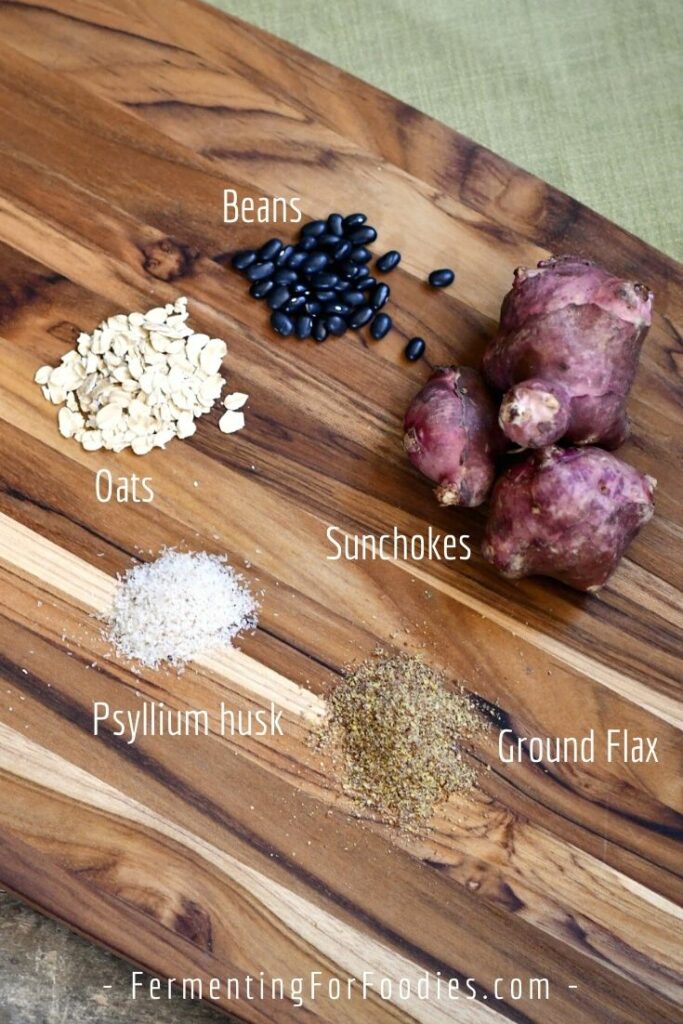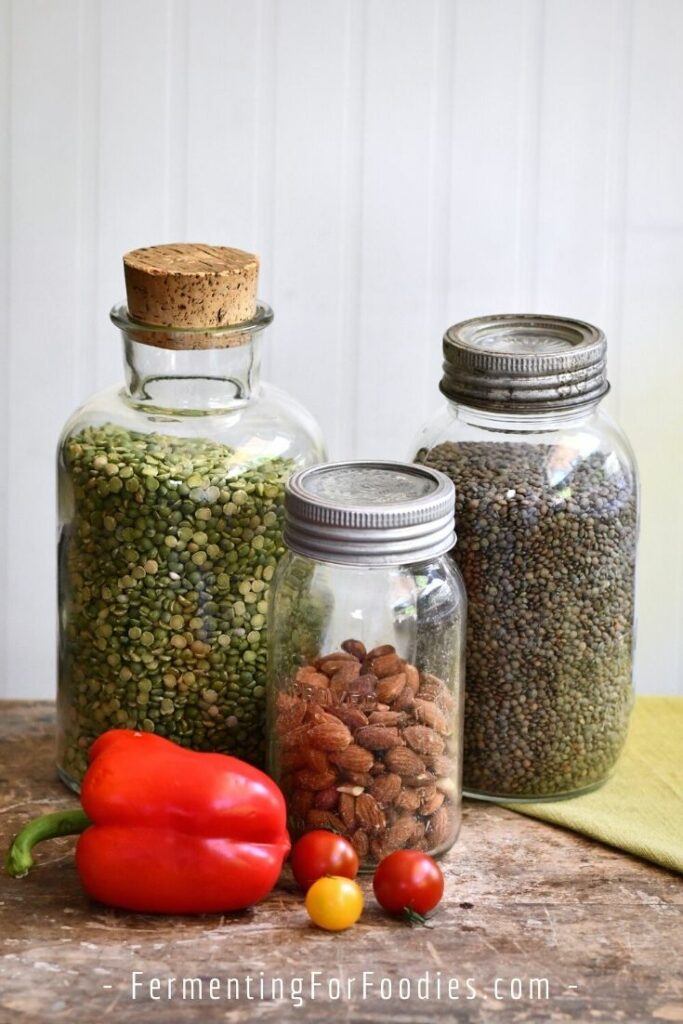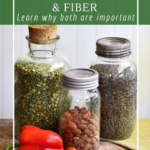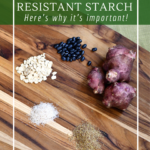Did you know that resistant starch and fiber are as key to a healthy diet? Here’s why you need to include both in your diet, along with 10 delicious options for getting more fiber in your diet.

Microbiome Health
Gut health is an in-vogue topic that may help immunity, energy levels, and weight loss. And there’s a good reason why gut health matters, because when it comes to the diversity of culture in your gut, it’s certainly true, that you are what you eat.
I prefer to use the term microbiome health. That’s because the microbes that influence our health don’t just live in our gut, they cover our entire body. In fact, human cells only make up 50% of the cells in the body Our microbiome influences everything from our food preferences and mood to whether we’re successful in maintaining a healthy weight.
If you want to know more, check out my post on the Human Microbiome.
Obviously, probiotic foods are a great way to feed our body healthy bacterial cultures. However, probiotics are only one part of the equation. It is equally important to feed our microbiome.
Fiber and resistant starch are what feed the healthy cultures in our bodies. This is why it’s important to eat fiber and resistant starch daily.
On the other hand, sugar, fructose, and sugar alcohols feed the unhealthy cultures in our bodies. It’s why I’m not a big fan of replacing sugar with alternative sweeteners.
Resistant Starch versus Fiber
The difference between resistant starch and fiber is similar to the difference between pickling and fermentation. There’s no easy distinction.
Perhaps the simplest way to think about it is that resistant starch is a type of soluble fiber. There is also insoluble fiber.
To make things even more complicated, there are 5 different types of resistant starch, and there is no universal definition of what is dietary fiber… phew.
Here is what you need to know:
- Resistant starch and dietary fiber pass through the stomach and small intestine undigested.
- Resistant starch and soluble fiber are what feed the good cultures in our large intestines.
- Insoluble fiber is the bulk-forming mass that allows us to have nice, healthy poop.
- It’s best to include a bunch of different sources of fiber and resistant starch in your diet. So don’t just take a spoonful of ground flax and assume you’re good.
If you are new to a high-fiber diet, here are a few suggestions:
- Start small. It takes a few weeks for your digestive system to get used to digesting lots of fiber and resistant starch. Too much all at once can cause digestive upset.
- It also takes a few weeks to build up the good bacterial cultures to digest resistant starch and dietary fiber.
- All types of fiber need water to support their actions. Otherwise, you can end up constipated. So make sure you drink plenty of water if you add more fiber to your diet.
My personal experience is that it took my family about 3 months of a microbiome-focused diet before we started to see changes in our health. I drink at least 8 cups of water daily, usually a mix of herbal and caffeinated teas. (Note, 8 cups doesn’t mean 8 glasses of water… that would be a lot! Most water bottles hold about 3 cups of water).
Foods that are high in Resistant starch and soluble fiber
Resistant starch is a carbohydrate that resists digestion. Here are some delicious options:
- Legumes (like beans and lentils)
- Nuts (with almonds being the highest)
- Whole grains (oats are particularly high)
- Unpeeled whole fruits and vegetables (particularly sunchokes and green bananas)
- Psyllium husk, chia seeds, and flax seed (like these flaxseed crackers)
- Cooked and cooled carbohydrates (like potato salad or twice-fried rice)

High insoluble Fiber Foods
The list of insoluble fiber foods overlaps the list above in many cases. It also overlaps with most healthy diet food plans including government recommendations and special diets, like the Mediterranean diet.
- Whole grains (especially bran)
- Legumes (like split peas and beans)
- Nuts and seeds
- Unpeeled whole fruits and vegetables (particularly potato skin, broccoli stems, etc.).


Leave a Reply